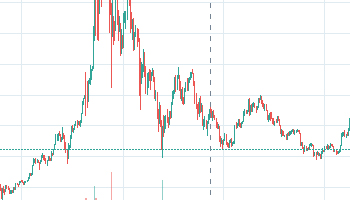The most common question I am asked is the future of cryptographic coins. Spectacular gains of over 3000% in 2017, followed by spectacular volatility in 2018, make this asset class unique. On the one hand, fans of digital coin technology are announcing the financial freedom of the institution: governments, central banks and large financial institutions.
Since gold and silver are no longer coins and their possession has become unacceptable to all, the currency has become the property of its rulers.
You cannot really own property like money if someone else can dilute it with inflation, i.e. the artificial creation of money, he explained.
Bitcoin was invented by Nakamoto-san to give people the opportunity to own their own money. For the first time since the introduction of hard currencies, individuals can regain control of their funds, i.e. own 100%.
If you have a Bitcoin with a private key, no one can expropriate you. You are completely free of your economic decisions, of what you buy and sell, with whom, when and how. Bitcoin is therefore a guarantee against the loss of legal power and against financial supervision.
However, at present, Bitcoin remains relatively small in the financial world and its market capitalization does not constitute a significant threat to the elite. Eventually, Bitcoin could begin to question the monetary monopolies of governments and central banks.
But where are we in the world with the acquisition of Bitcoin as a store of value?
Currently there are almost 30 million portfolios, and this trend in the creation of portfolios continues to grow. Today, however, only 0.7% of the world's population has access to the Internet.
How many Bitcoins are in circulation?
The current market capitalization of all cryptographic currencies is today around 425 billion US dollars, after a peak of 800 billion US dollars. Bitcoin is by far the largest; its value is $157 billion, compared to the second largest, Ethereum, of $68 billion.
What are the downsides of Bitcoins?
Bitcoin transactions also have other costs. You still have to pay fees and commissions when you make a transaction with Bitcoin. The long-term viability of Bitcoin depends on more people accepting it as a unit of payment, but the valuation has been separated from its use as a unit of exchange. This is a problem for all cryptographic currencies, but it is likely to affect Bitcoin more due to its high profile.
How do other cryptographic coins qualify, can they be an alternative to Bitcoin? Ethereum as an example is faster than Bitcoin. Transactions are completed in seconds instead of minutes. Advocates suggest that their applications are used more widely than Bitcoin and can act as a platform for distributed computing. There are still doubts about the computing power needed to support Bitcoin and to limit long-term growth. Here, other new cryptographic currencies may offer more efficient options.
Cryptographic coins are no longer the inaccessible trading terrain for technology connoisseurs and offer real investment opportunities for real investors.
Smart contracts allow users to set restrictions on when and how their Bitcoins can be spent. For example, one transaction may require multiple signatures or take time. If you are currently creating a transaction with these types of conditions, the entire smart contract will be written into the Bitcoin blockchain when the coins are issued. With MAST, only the parts of the smart contract that are fulfilled are placed in the blockchain, the rest remains hidden until the conditions are met.
What is the difference between Blockchain and Bitcoin?
There are significant differences between Bitcoin and Blockchain. Blockchain is a digitized, distributed and secure ledger that ensures stable transactions and solves the trust problem when two parties exchange a value. Cryptographic coins such as Bitcoin depend on the chain of blocks for transactions. However, the chain of blocks exceeds the cryptographic coins and offers many solutions that could disrupt many industries with significant consequences.
An area of confusion in Blockchain is the perceived negative impact on the environment. However, this is a specific problem of Bitcoin and some other cryptographic currencies. This is due to the limitations of Bitcoin's decades-old design and Bitcoin's mining process, which requires a working test to verify transactions. Proof of concept is an essential mathematical algorithm for validating transactions in the Bitcoin block chain and consumes enormous computing power and energy close to Denmark's annual consumption. Other cryptographic currencies work differently. For example, Etherum uses the concept of proof of consumption, which is energy efficient, while cryptographic coin does not require any mining.
What else is there to know about the development of Bitcoin?
Firstly, it should be noted that Bitcoins has a limited number of "coins", which amount to 21 million BTC if all coins are minted before 2140. Bitcoin is likely to be unprofitable due to high energy costs and high hardware requirements for mining. Bitcoin's transaction fees will also not be sufficient to keep the network operational. There are many theories about what could happen if mining is stopped. However, Bitcoin may not have the processing power to handle transactions that could paralyze the network. So the question is, what about the value of Bitcoin?
Second, Bitcoin's promise was to bypass the centralized economic system and allow the exchange of values between peers using digital currency. However, with the fluctuating price of Bitcoin, it is very difficult to buy a cup of coffee or an album online. This is also impractical given the delay needed to complete transactions where time is a critical factor. In fact, the number of Bitcoin transactions has fallen dramatically since the astronomical rise of Bitcoin in December 2017.
What has Bitcoin done to set historical standards?
Bitcoin is likely to go down in history as a great technological invention that popularized the chain of blocks, but failed because of its design limitations. Just as the industrial revolution was driven by the internal combustion engine, Bitcoin is one of the most valuable contributions of the Blockchain polymorphic engine, which will further accelerate innovation in the post-information era and immensely affect our lives.
What is advisable?
But one has to be careful with all cryptographic currencies and not make extremely large investments, because there is a great risk that the trend will go in the negative direction. But the market can also calm down and rise.
Conclusion
In general, it is very difficult to give a forecast about the development of Bitcoin. Although Bitcoin exists since 2009, it is still considered a new technology that must first be established in the stock market. There is a rise and fall in the development of Bitcoin and one cannot say exactly where the road leads.


 Updated every 10 minutes
Updated every 10 minutes


